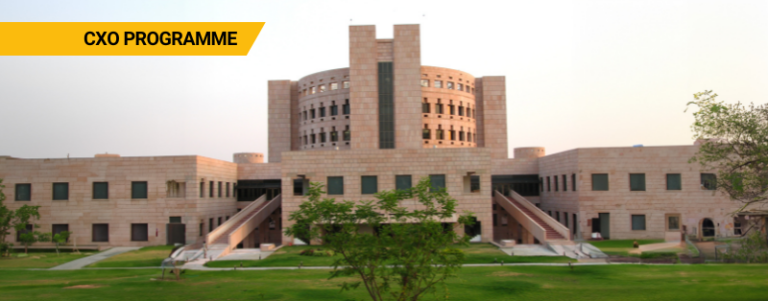10+ Types of Leadership Styles and How to Choose Yours (Updated for 2024)

Leadership style is the reflection of the leader’s behavioural pattern that enables them to manage their employees by directing and motivating them towards a common vision. Leadership styles also determine a leader’s approach to strategise and implement methods while fulfilling the business expectations and focusing on the team’s growth.
A leader often owns multiple leadership styles to tackle different business situations. In this article, we will discuss leadership styles in depth.
What is Leadership
Leadership is the art of motivating people to work and focus toward a planned objective. It also encourages them to take up responsibilities and grow personally and professionally.
In an organisation, leadership is a vital management function that ensures improved efficiency and achievement of business objectives. Effective leadership provides clarity of purpose and guides the organisation to its mission.
An effective leader is someone who:
- Inspires and motivates others
- Has a vision and directs the path to achieve it
- Ensures the development of their team members
- Leads teams toward common goals by balancing immediate tasks and long-term vision
- They also build positive cultures that foster creativity and collaboration
- They adopt different types of leadership styles to suit the situation for growth and achievement
- Furthermore, they inspire trust through being authentic and having integrity
- Good leaders are also invested in the development of their team members
What is a Leadership Style?
A leadership style is a way in which a leader accomplishes their team’s objective by motivating employees to work towards the common goal and focusing on their well-being. Understanding leadership style is imperative for a team to work together and also keep growing while embracing changes.
Here are some reasons why leadership style matters:
- Increases team engagement
- Improves team communication and collaboration
- Strengthens the effectiveness of the team
Different Types of Leadership Styles
A. Democratic Leadership Style
1. What is Democratic Leadership?
A democratic leader makes decisions based on their team’s opinion and feedback. In simpler words, they get everyone involved in the decision-making process.
Here are some features of this leadership style:
- Transparent conversations
- Everyone’s opinion counts
- Values collaboration and teamwork
- Also encourages discussions
However, this is one of the types of leadership that cannot be used in the long run. This is because of certain drawbacks, such as a leader losing their authority, constant debates over decisions, and miscommunication between team members.
2. What Kind of Business Organization/Team Can Benefit From This Type of Leadership?
Democratic leadership benefits organizations that value collaboration and inclusivity, such as nonprofits, tech companies, or startups. This style encourages diverse input, creativity, and consensus-building, leading to comprehensive decision-making.
3. Advantages
Democratic leadership, also referred to as participative leadership or shared leadership, offers several key benefits:
- Engagement: Team members feel valued and contribute more actively, thus enhancing performance
- Innovation: Open discussions not only promote creativity and diverse solutions but also improve outcomes as well
- Satisfaction: Inclusivity leads to higher job satisfaction and retention, consequently reducing turnover
- Cohesion: Shared decision-making reinforces a unified vision, strengthening teamwork
- Trust: Transparency builds trust among team members, leading to stronger relationships
- Adaptability: Leaders can adjust strategies based on team feedback, which helps improve the team’s agility
4. Disadvantages
Despite the promise of building a collaborative work culture, types of leadership that adhere to the principles of democratic leadership present a set of limitations as well. Some of them are:
- Time-Consuming: Decision-making may be slower because of consultations and discussions
- Overwhelming: Leaders may struggle with managing inputs effectively, inevitably leading to burnout
- Inefficiency: Quick decisions are challenging, impacting project outcomes and deadlines
- Confusion: Multiple inputs can lead to unclear delegation and roles, further leading to miscommunication
- Limited Control: Leaders have limited control over outcomes due to shared decision-making
5. A Popular Business Leader Who Represents Democratic Leadership Style
Satya Nadella, the CEO of Microsoft since 2014, provides a popular example of types of leadership that follow the democratic style.
ALSO READ: Transactional vs. Transformational Leadership: Which One Suits You Best?
B. Autocratic Leadership Style
1. What is Autocratic Leadership?
In a complete contrast to the participative types of leadership explained above is autocratic leadership. In this case, the opinions of team members are not considered while making any business decision. Instead, leaders expect others to adhere to their decisions, which is not sustainable in the long run.
Among the various types of leadership, the autocratic style is the one that has the leader at the center. It is all about centralized decision-making, where leaders make choices independently, offering clear direction and control. It therefore minimizes team input, creating a rigid structure. Leaders set firm rules and guidelines, ensuring consistency in processes and tasks. Some of the key features of autocratic leadership styles are
- First and foremost, leaders make decisions unilaterally, providing clear direction
- They dictate work methods and processes, ensuring consistency
- The environment is highly structured and rigid, resulting in reduced flexibility
- Rules are clearly defined and communicated, preventing confusion
- This style discourages out-of-the-box thinking, limiting innovation
2. What Kind of Business Organization/Team Benefits From This Type of Leadership?
Autocratic leadership, also known as authoritarian leadership, works well when clear directives are needed and decisions must be made quickly. Hence, these types of leadership styles suit organizations or those sectors of the organization that need swift decision-making and tight control. Essentially, autocratic leadership provides clear chains of command, directive leadership, and effective implementation.
3. Advantages
Types of leadership based on autocratic, authoritarian principles provide several notable benefits:
- Quick Decisions: Rapid decisions are possible in stress-filled situations, thus maintaining momentum
- Clarity: Clear chains of command streamline oversight, ensuring efficient management
- Efficiency: It works well for tasks needing directive leadership, which, as a result, avoid delays
- Direction: This style ensures projects stay on track and deadlines are met, promoting progress
- Consistency: By exercising strict control and authority over work methods, this leadership style ensures consistency and minimizes errors
4. Disadvantages
As far as these types of leadership go, there are a host of serious disadvantages to consider, such as:
- Lack of Input: It often discourages team contribution, limiting creative solutions and diverse ideas
- Morale Issues: Team members often feel undervalued, resulting in dissatisfaction and resentment
- Overlooked Expertise: Leaders may ignore valuable insights from their teams, limiting the potential of employees
- Rigid Structure: The rigid environment may stifle innovation and adaptability and can hinder growth
- Trust Issues: The lack of consultation may undermine trust between team members and leaders
5. Popular Business Leader Who Represents Autocratic Leadership
Steve Jobs, the founder of Apple, was known for his autocratic leadership style.
ALSO READ: What is Autocratic Leadership? What are its Benefits and Challenges?
C. Laissez-Faire Leadership Style
1. What is Laissez-Faire Leadership?
Laissez-faire is a French phrase that basically means “let them do”. This leadership style is the least intrusive and ensures the decision-making authority lies with the team members. Laissez-faire leadership empowers team members and even goes a step further. It holds them accountable for their work. This invariably motivates many team members to put their best foot forward, thus improving the organization’s efficiency and productivity. Since this leadership style in management allows team members to make decisions independently of instruction or intrusion of the top brass, it is also called delegative leadership. Notable features of a laissez-faire leadership environment include:
- Employees get the freedom to manage their tasks, thus promoting independence
- Leaders offer guidance and resources as needed, ensuring success
- Leaders also hold themselves accountable for overall outcomes
- Furthermore, teams can innovate and experiment freely
- It also encourages learning and independence, allowing teams to develop
2. What Kind of Business Organization/Team Benefits From This Type of Leadership?
Laissez-faire leadership fosters autonomy, innovation, and self-management, allowing teams to thrive independently. Hence, this style is ideal for creative or highly skilled teams, such as those in tech, advertising, or entertainment industries.
3. Advantages
Laissez-faire leadership provides several benefits:
- Independence: Teams work autonomously, promoting productivity and confidence
- Flexibility: This style fosters innovation, collaboration, and creativity
- Empowerment: Teams also feel empowered to manage tasks their way, boosting morale
- Accountability: It even encourages ownership because everyone takes responsibility for their contributions
- Retention: Above all, this sense of freedom and growth can lead to higher job satisfaction
4. Disadvantages
This type of leadership, even though beneficial, presents certain limitations, such as:
- Not Suitable for Inexperienced Employees: It might be difficult for teams that require more active guidance from their leaders
- Overwhelm: Teams might feel lost without a clear structure, resulting in reduced performance
- Lack of Precision: Self-motivation and time management issues can impact task completion
- Confusion: Without clear guidance, the power balance between leaders and reports can blur
- Lack of Direction: Teams may struggle to stay on track, leading to missed goals and deadlines
5. Popular Business Leader Who Represents a Laissez-faire Leadership Style
Renowned American investor and business icon Warren Buffet remains a key representative of a laissez-faire style of leadership.
ALSO READ: Learn How Bureaucratic Leadership Works and When to Use it
D. Strategic Leadership Style
1. What is Strategic Leadership?
Strategic leadership is when leaders use their skills and capabilities to help team members and organizations achieve their long-term goals. In essence, strategic leaders emphasize aligning daily tasks with long-term strategies, ensuring sustained progress. Moreover, they create frameworks for decision-making, filtering choices through the lens of their broader vision. Additionally, strategic leadership fosters accountability and a positive company culture, encouraging transparent communication, team collaboration, and productivity. Here are some unique traits of strategic leaders:
- They are interested in the well-being of others
- They are open-minded as well as self-aware
- Notably, such leaders are good at interpersonal communication
2. What Kind of Business Organization/Team Benefits From This Type of Leadership?
Strategic leadership suits organizations focused on long-term goals and vision, such as enterprises, consultancies, or global corporations.
3. Advantages
Advantages of leadership styles of this type include:
- Cohesion: Strategic leaders unite teams, fostering collaboration
- Long-term Thinking: They filter decisions through a broader vision, enhancing planning
- Productivity: Strategic leadership also boosts productivity by focusing on clear goals
- Employee Commitment: This style attracts and retains top talent, as a consequence, reducing turnover
- Company Growth: Clear direction drives the company forward efficiently
4. Disadvantages
Some of the disadvantages of these types of leadership are:
- Unpredictability: Long-term strategies may falter against unforeseen challenges
- Neglect: Leaders can lose sight of immediate needs, causing unresolved issues
- Risk: Both excessive and insufficient risk-taking can hinder success
- Stress: Uncertainty and rapid growth may overwhelm employees, impacting morale
- Overemphasis: Strategic leaders may overly focus on the big picture, neglecting crucial details
5. Popular Business Leader Who Represents Strategic Leadership Style
Jeff Bezos, the founder of the global e-commerce giant Amazon, represents the finest aspects of strategic leadership.
ALSO READ: Who is a Leader? Salary, Skills, & Career
E. Transformational Leadership Style
1. What is Transformational Leadership?
Transformational leadership drives positive change in an organization, motivating teams through vision and innovation. They inspire others to achieve the unexpected. They aim to transform and improve team members’ and organizations’ functions and capabilities by motivating and encouraging them. This style also encourages creativity, challenging the status quo and fostering a supportive environment.
2. What Kind of Business Organization/Team Benefits From This Type of Leadership?
Transformational leadership suits organizations seeking to inspire and innovate. Hence, this style supports businesses needing fresh perspectives and long-term vision, enhancing productivity and satisfaction.
3. Advantages
Types of leadership that follow the principles of transformative leadership present numerous advantages such as:
- Inspiration: This style motivates teams to achieve and innovate
- Collaboration: Open communication fosters teamwork and camaraderie
- Commitment: Transformational leaders inspire loyalty, reducing turnover
- Growth: This style nurtures both professional and personal development
- Innovation: Intellectual stimulation leads to creative solutions
- Autonomy: Leaders empower employees, enhancing job satisfaction
4. Disadvantages
Despite the radicalism that these types of leadership showcase, they pose a number of disadvantages:
- Burnout: Transformational leaders may neglect their own needs, leading to exhaustion
- Favoritism: Individual guiding team members can lead to favoritism and biasedness
- Immediate Needs: Focusing on long-term goals may overshadow pressing issues
- Bureaucracy: This style can clash with rigid organizational structures, limiting effectiveness
- Implementation: Implementing rapid changes characteristic of these types of leadership may overwhelm teams and hinder productivity
5. Popular Business Leader Who Represents Transformational Leadership Style
Sanjiv Bajaj, the chairman and managing director of Bajaj Finserv Limited, represents the transformational leadership style.
ALSO READ: What is Transformational Leadership? How Does it Impact Your Organization?
F. Transactional Leadership Style
1. What is Transactional Leadership?
Transactional leadership is one of the key types of leadership, characterized by its emphasis on rewards and punishments to motivate employees. This style of leadership is also known as managerial leadership. In essence, this approach operates on an exchange model, where leaders reward employees who meet goals and penalize those who don’t. Leaders ensure consistent performance by following established processes and rules. As a result, this style is well suited to environments that prioritize order and predictable results. Some of the key features of transactional leaders are:
- Provide well-defined goals to employee, helping them understand their roles and tasks, and reducing ambiguity
- Manage through structured and established guidelines, ensuring consistency
- Maintain transparency and deploy a system of rewards and penalties
- Provide quick feedback, helping employees stay on track
- Emphasize workflow management, avoiding delays
- What Kind of Business Organization/Team Benefits From This Type of Leadership?
This style benefits organizations with clear goals and metrics, such as enterprise companies focusing on immediate results, set processes, and existing structures.
3. Advantages
Advantages of a transactional leadership environment include:
- Clarity: Employees know their tasks and goals, which helps them avoid confusion
- Fairness: Transparent rewards and penalties create a balanced work environment
- Motivation: Rewards incentivize performance, driving productivity and engagement
- Feedback: Quick feedback keeps employees aligned with expectations, improving performance
- Efficiency: Clear guidelines streamline processes, reducing delays and duplication
- Cost-Effectiveness: Reduced turnover and efficient decisions save resources
4. Disadvantages
Similar to other types of leadership, transactional leadership too presents a set of difficulties:
- Short-Term Focus: Emphasis on immediate goals may hinder long-term planning, impacting adaptability
- Limited Creativity: Rigid structures limit innovation opportunities, stifling employee potential
- Low Morale: Some employees may feel demotivated, impacting productivity and satisfaction
- Mistakes: Lack of proactive feedback may lead to costly errors, affecting quality
- Lack of Motivation: Not all employees respond to a reward-and-penalty system, consequently diminishing engagement
- Over-Reliance on Leader: Dependence on one person can cause manager complacency or condescension
5. Popular Business Leader Who Represents Transactional Leadership Style
Indian business tycoon Mukesh Ambani, the chairman of Reliance Industries, exhibits a leadership style that accords perfectly with the transactional model of leadership.
ALSO READ: How to Build a Servant Leadership Approach: A Comprehensive Guide
G. Coach-Style Leadership Style
1. What is Coach-Style leadership?
Coach-style leadership is one of the prominent types of leadership today. It focuses on guiding and developing team members. For instance, coaching leaders emphasize active listening, constructive feedback, and emotional intelligence to support growth and collaboration. A coaching leader develops strategies that highlight team members’ success. Though this is similar to strategic and democratic leadership styles, the focus here is more on the individual. Here, leaders function as coaches—they show how individual contributions support broader goals, and invest time to nurture their team’s talents. Key features of a leader coach are:
- Mentors and supports team members’ growth, nurturing talent
- Gives constructive feedback coupled with praise, which supports employee improvement
- Foster open dialogue, building trust and collaboration
- Remain attuned to employees’ needs, enhancing team cohesion
- Empower teams, helping them reach their full potential
2. What Kind of Business Organization/Team Benefits From This Type of Leadership?
Coaching leadership suits organizations that prioritize personal development and mentorship. Hence, teams in dynamic fields such as marketing, tech, or creative industries can excel under this leadership, gaining guidance for individual growth.
3. Advantages
The advantages of coach-style leadership are as follows:
- Strong Connections: Coaching relationships foster tight-knit teams, improving collaboration
- Confidence Building: Leaders instill confidence in employees, enhancing performance
- Balanced Feedback: Constructive feedback, coupled with support, nurtures growth and development
- Trust: Coaching creates a culture of mutual trust and respect
- Growth Mindset: Emphasis on development encourages learning and innovation
- Team Cohesion: A collaborative spirit strengthens unity and cooperation
4. Disadvantages
- Time-Consuming: Personalized coaching requires significant time investment, straining resources
- Cultural Clashes: May conflict with top-down structures in some organizations, limiting adoption
- Adaptive Challenges: Coaching must be tailored to each individual’s needs, complicating management
- Slow Results: Development may take time to manifest, delaying progress
- Management Strain: Significantly, time invested in individual coaching may strain leaders, affecting their performance
5. Popular Business Leader Who Represents Coach-Style Leadership
Sir Richard Branson, the founder of the Virgin Group, is a shining example of coach-style leadership.
ALSO READ: How Leadership Coaching Can Help Leaders Reach Their Full Potential
H. Bureaucratic Leadership Style
1. What is Bureaucratic Leadership?
Bureaucratic leadership is one of the traditional types of leadership, characterized by a hierarchical management structure. This style focuses on creating clear chains of command, with decision-making power resting with top management. Leaders enforce established rules and regulations, ensuring consistency and predictability. This style works well in environments requiring stability and adherence to procedures. Some key markers of a bureaucratic leadership environment are:
- Clear rules, policies, and procedures govern employee behavior and actions
- The highest authority makes decisions and communicates them through a defined chain of command
- Organizations divide into departments, assigning specific roles and responsibilities
- Employees are treated impartially, as a result, reducing bias and maintaining consistency
- This style maintains order, thus decreasing ambiguity and uncertainty
2. What Kind of Business Organization/Team Benefits From This Type of Leadership?
Bureaucratic leadership benefits large or traditional organizations with established processes and stable environments.
3. Advantages
Bureaucratic leadership features a number of advantages for a business environment. Some of them are:
- Impartiality: There is less bias and favoritism because employees are treated fairly
- Clarity: As a result of clearly defined roles and procedures that eliminate ambiguity, processes are streamlined
- Efficiency: Specialization promotes productivity through the division of labor
- Predictability: Established rules and procedures also ensure consistent performance
- Reliability: This style fosters system efficiency, maintaining stability
- Structure: The hierarchical system provides clear direction, guiding workflow
4. Disadvantages
Some of the disadvantages presented by this leadership style in management are:
- Lack of Creativity: Rigid procedures limit innovation and this can stifle new ideas
- Inflexibility: The hierarchical structure struggles to adapt to changes, hindering growth
- Micromanagement: Leaders may oversee employees excessively, causing discomfort
- Personal Growth: Strict roles limit employees’ opportunities to develop and progress
- Slow Change: Rigid structures delay response to dynamic environments
- Conformity: Employees must follow rules and procedures, limiting individual contributions
5. Popular Business Leader Who Represents Bureaucratic Leadership
Alfred P. Sloan, the former CEO of General Motors, exemplified the bureaucratic leadership style.
ALSO READ: How Leadership Training Programs Can Unleash Your Potential to be a Leader
How to Choose the Leadership Style for You?
Here are some ways in which you can choose the right leadership style for you:
- Outline your values, ethics, and challenges you face as a leader to learn about yourself, because getting to know yourself is the first step toward becoming an effective leader
- Also observe leaders you respect for inspiration as well as to help you determine your leadership style
- Try different types of leadership before choosing one
- Find a mentor to help you hone your leadership style
- Additionally, ask peers for feedback
- Take a leadership style assessment too, as a way to determine your leadership style
- Learn about leadership styles to become a leader
- Understanding the types of leadership can add much value to the organization and create a good impact on your team members
ALSO READ: The Nature of Leadership Decoded: 10 Basic Fundamentals Every Leader Must Know
Frequently Asked Questions About Leadership Styles
1. What is the Definition of Leadership Style?
A leadership style is the behavior pattern displayed by a leader to work in a certain environment while focusing on the business’s growth and its team.
2. Why is it Important to Know Your Leadership Style?
Knowing your leadership style helps you make effective business decisions. Additionally, it provides a blueprint on how to devise effective strategies, tackle complex situations, and manage a team effectively.
Therefore, if you want to know more about different types of leadership and become a leader who makes a difference, pursue an advanced certificate course to enhance your skills and knowledge. Additionally, these online courses help build a strong foundation for becoming an effective leader. Emeritus offers different leadership courses in collaboration with renowned institutes around the world.
Write to us at content@emeritus.org





